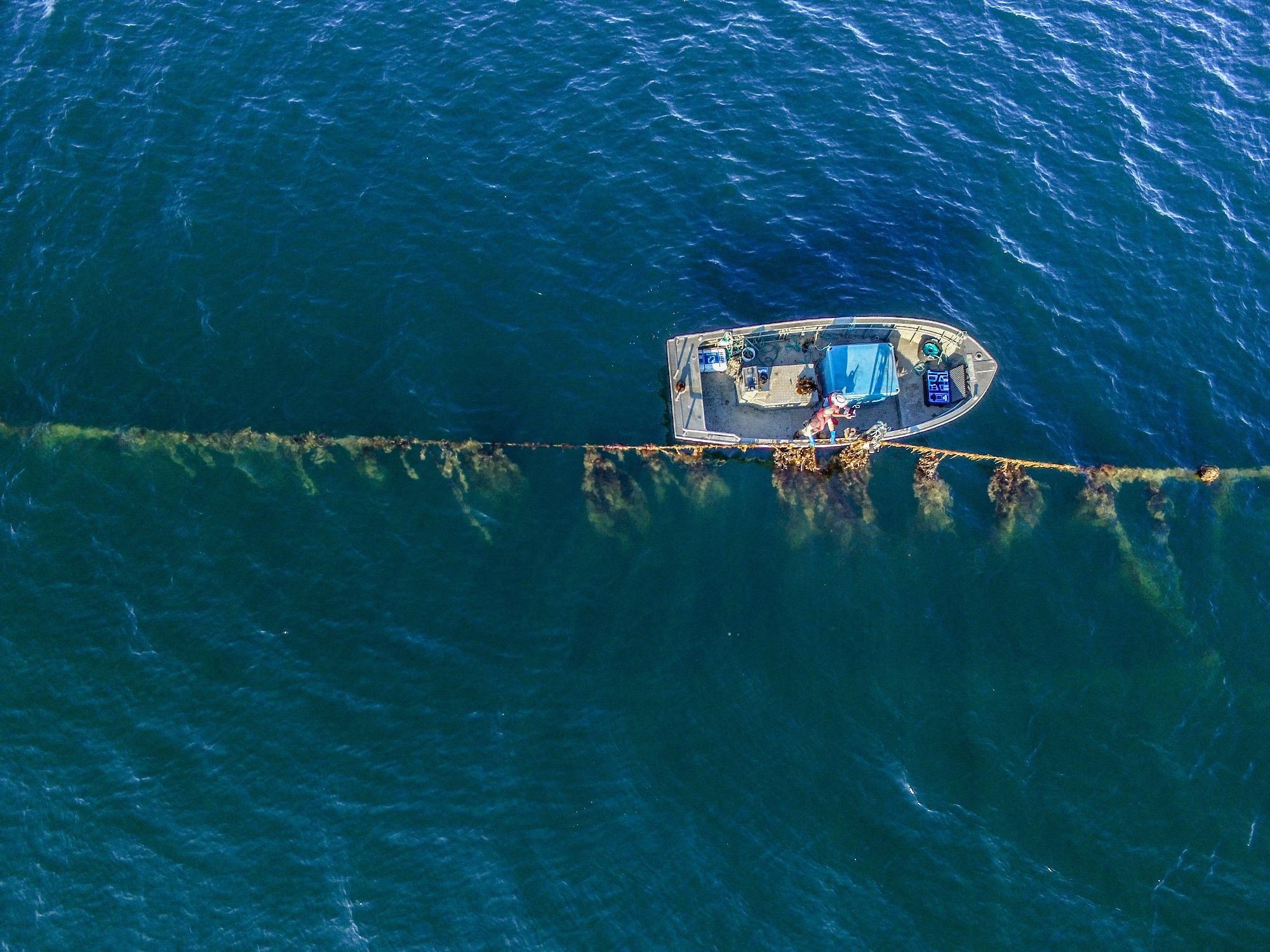Seaweed, as its unfortunate name suggests, can be a nuisance. It makes a mess of beautiful beaches. It bobs up and down in the waves in an unsightly blob. And it sticks to unsuspecting swimmers as they try to enjoy a dip.
 Researchers from KAUST and Aarhus university believe they have identified a model solution to climate change, biodiversity loss, joblessness, hunger and environmental damage. In a paper published in Nature Sustainability, the co-authors outline how the cultivation and use of seaweed as a carbon capture technology, a job and tax revenue generator, and a food source, can protect and restore the planet. Credit photos from Aarhus to Michael Bo Rasmussen, Aarhus University.
Researchers from KAUST and Aarhus university believe they have identified a model solution to climate change, biodiversity loss, joblessness, hunger and environmental damage. In a paper published in Nature Sustainability, the co-authors outline how the cultivation and use of seaweed as a carbon capture technology, a job and tax revenue generator, and a food source, can protect and restore the planet. Credit photos from Aarhus to Michael Bo Rasmussen, Aarhus University.
But despite its reputation with some ocean goers, seaweed just might be one of the most powerful tools we have to save the planet from manmade climate change while providing a path to realizing many of the UN Sustainable Development Goals.
Researchers from KAUST and Aarhus University believe seaweed is a model solution to climate change, biodiversity loss, joblessness, hunger and environmental damage. In a paper published in Nature Sustainability the co-authors outline how the cultivation and use of seaweed as a carbon capture technology, a job and tax revenue generator, and a food source, can help protect and restore our planet.
“Our research consolidates seaweed farming as an underpinning of a sustainable future,” Professor Carlos Duarte, study lead author said. “It is scalable, with a 2,000-fold increase potential, it generates valuable products while also contributing to carbon sequestration below the farm, it produces sustainable fuels, and it displaces carbon-intensive products, thereby providing a range of contributions to climate action. While growing at sea, seaweed forms an ecosystem that delivers multiple benefits to the marine environment.”
The cultivation and use of seaweed, the authors believe, will directly support six of the UN Sustainable Development Goals (SDGs), and indirectly support several others. Achieving zero hunger, supporting good health, making clean energy affordable, as well as supporting industrial innovation, climate action, and ocean conservation, are all outcomes of cultivating seaweed. Not only is the plant climate positive, profitable, and edible, but it promises to feed and employ millions while preserving the planet and fostering poverty reduction and gender equality.
“Seaweed provides wonderful materials for a range of applications, grounded in their amazing diversity, as seaweed are as far apart from a genomic perspective as mushrooms and elephants. This genomic diversity provides a phenomenal source of new materials across a range of industries, from food, to fuels and plastics,” Duarte said.
The pitch, as much as there is one, is that seaweed cultivation must be ramped up significantly. This, of course, might encounter roadblocks in legislatures around the world as western regulations, where seaweed farming is just starting, are quite unwelcoming to seaweed aquaculture. The paper outlines in broad terms the objections that could be raised and addresses them in turn.
“Because seaweed farming is a new industry in western nations, existing regulatory frameworks do not facilitate its development. In some nations it is easier to get a concession for marine oil and gas extraction than for a seaweed farm. Creating a friendlier regulatory environment that encourages, rather than deter, seaweed farming will be critical to delivering on its potential.”
“Currently, seaweed farming occupies about 2,000 Km2 of land, compared to about 60 million Km2 land food producing systems occupy. We consider that about 4 million Km2 of ocean can support seaweed aquaculture while delivering positive impacts on the marine environment. In the rump-up to COP26, we consider that scaling seaweed farming can be a wedge of a regenerative approach to our oceans, delivering climate action while alleviating hunger and poverty,” Duarte said.
Professor Dorte Krause-Jensen from Aarhus University adds that sustainability standards and consideration of the carrying capacity for seaweed farming need be in place to avoid potential unattended negative consequences the farming.
“The utilisation of seaweed in a cascading biorefinery extracting biomolecules sequentially, offers a path to maximise the value of the biomass and render seaweed farming profitable, even in Western countries where costs are higher” said senior researcher Annette Bruhn of Aarhus University. “Promoting sustainable seaweed cultivation as an emission capture and utilisation technology supporting the circular bioeconomy, calls for a cross-sectorial approach to solving societal challenges. We need a disruption of the traditional way of thinking climate, environment and resource provision in each their sector and we need partnerships between science, industry and authorities”.